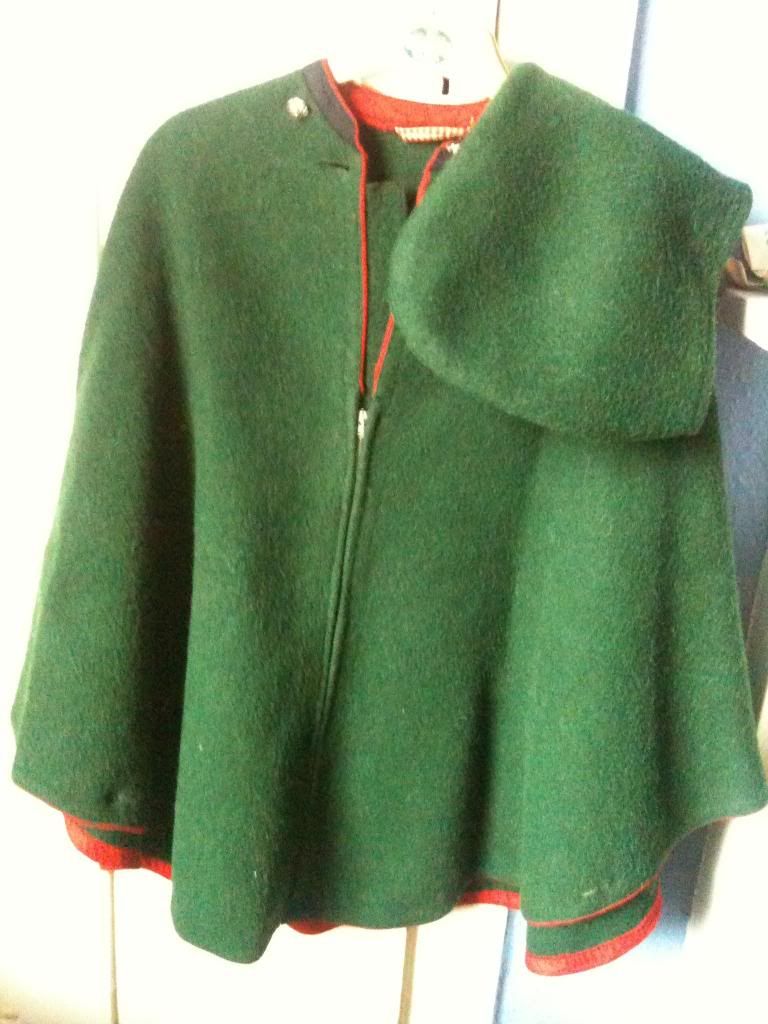When I was in the army in Germany, a couple of sergeants had wool army blankets sewn to the underside of an issue rubberized nylon poncho. I never had one myself, not being able to acquire the necessary spare items needed to create such a thing. But they must have been handy in the raw weather that Germeny, even southern Germany, experiences. The chief drawback was that they were quite heavy but it was an entirely mechanized unit, so no one every did much walking. Since then, the army came out with a so-called (officially called, too) poncho liner that attached to the newer and lighter poncho with tie strings. Only the poncho liner did not have a hole for the head, so it couldn't be used as a garment.
A couple of armies were still issuing wool capes or cloaks to certain troops as late as WWII and I've actually seen one. It was coarse wool and in an almost dead leaf color, as near as I can remember, but maybe plain drab color instead. It was probably cape length, or just about knuckle length, depending on how long your arms are. Have no idea if they came in different sizes. Similiar military capes in a finer wool are still on issue at the US Military Academy and some private military academies, all worn with greatcoats, and also with the foot guards. I don't know about the British version but I think all the American ones are lined. In theory, all those sound like fairly practical garments for certain conditions, only none of them come with hoods and they're still capes, meaning they open in the front, and they aren't generally intended as rain garments.
The actual and original Sami garment still seems to have advantages over other things and almost seems custom designed for outdoor use where you'd be using your hands and arms, although it would be more correct to say it is a traditionally evolved garment. It would be just like us modern folk to over engineer the thing in trying to recreate it and to try to design in features that were absent in the model. Personally, I can see the practicality of the thing, only I don't live in their environment. I do get a lot of use out of a relatively small and lightweight (relative to an army issue model, that is) poncho that can be thrown back over the shoulders when the rain slackens. One advantage in the traditional garment over an equally traditional poncho is that the Sami garment is tailored to fit the shoulders and would thus be a lot handier. Thanks for all the references.

